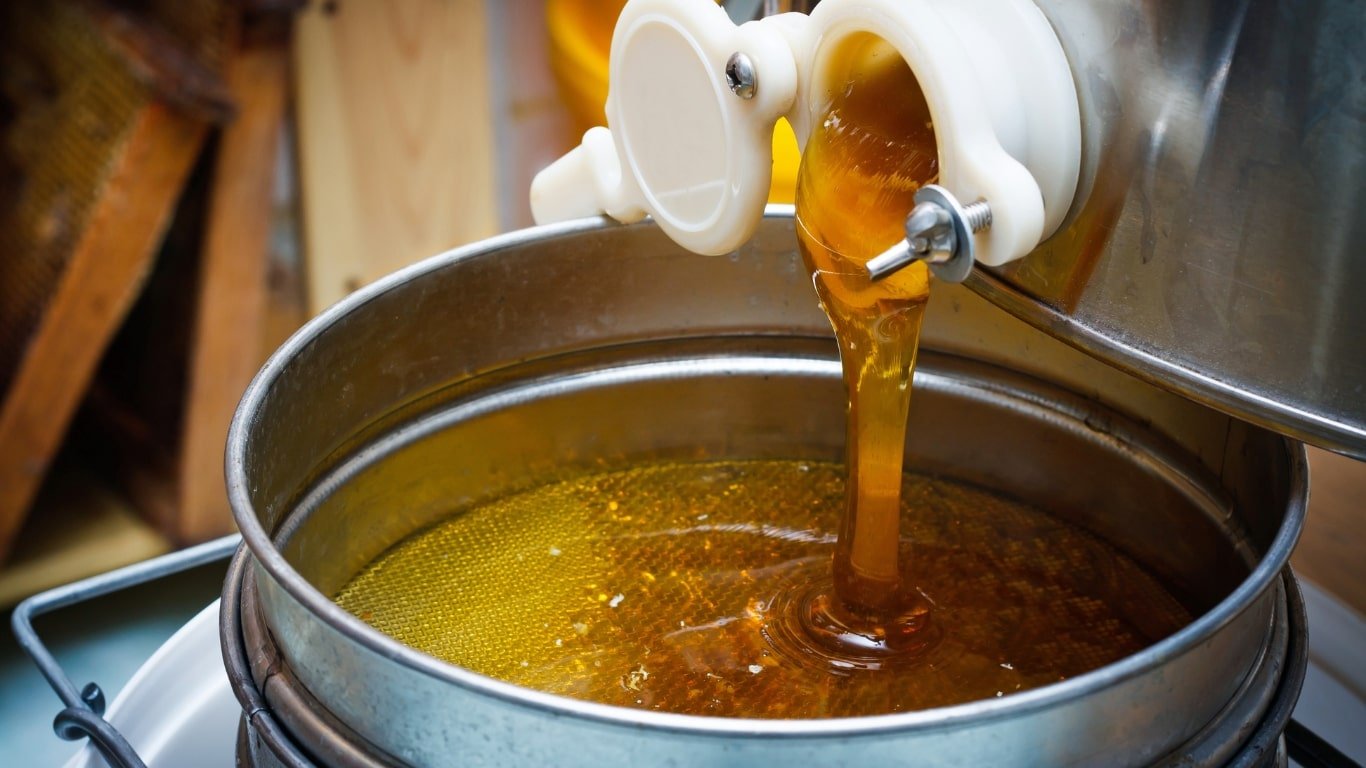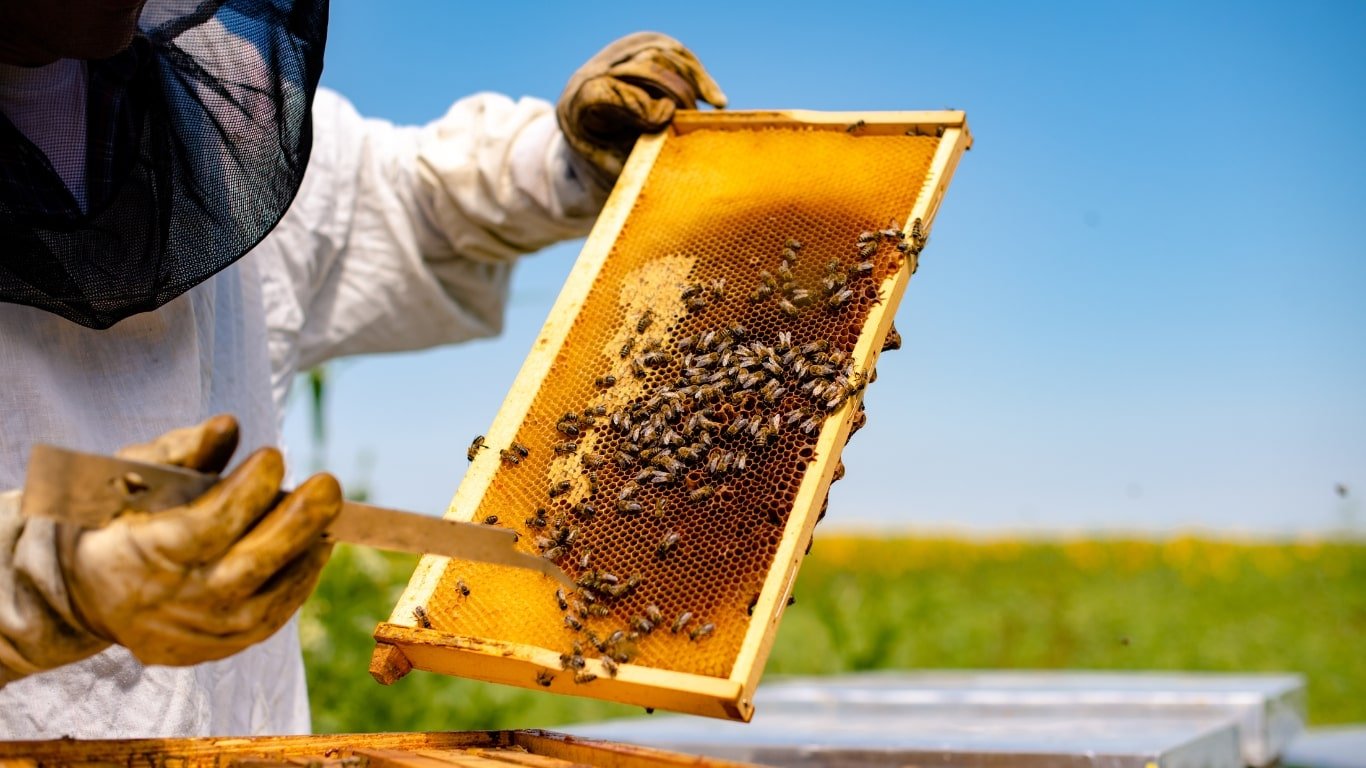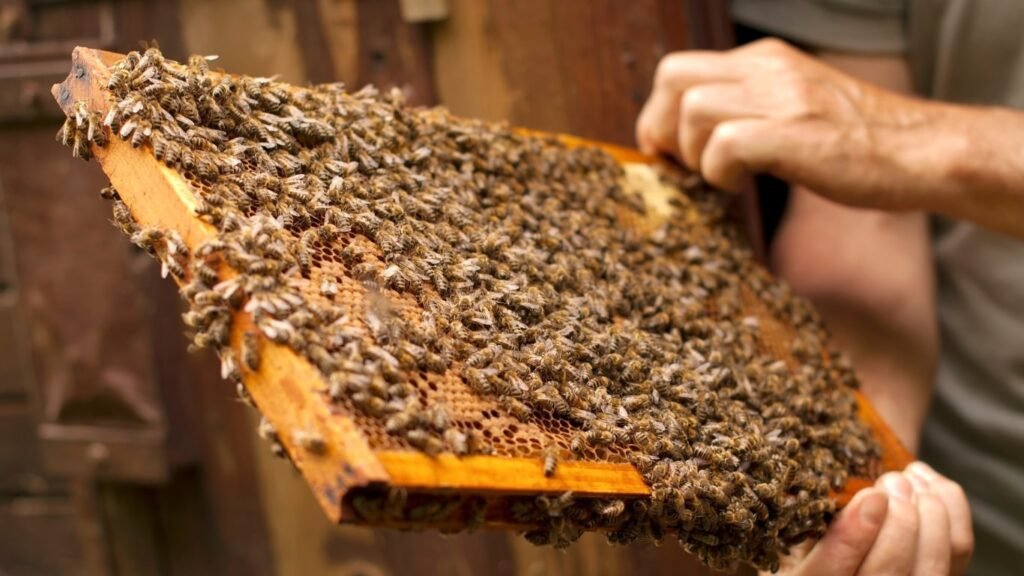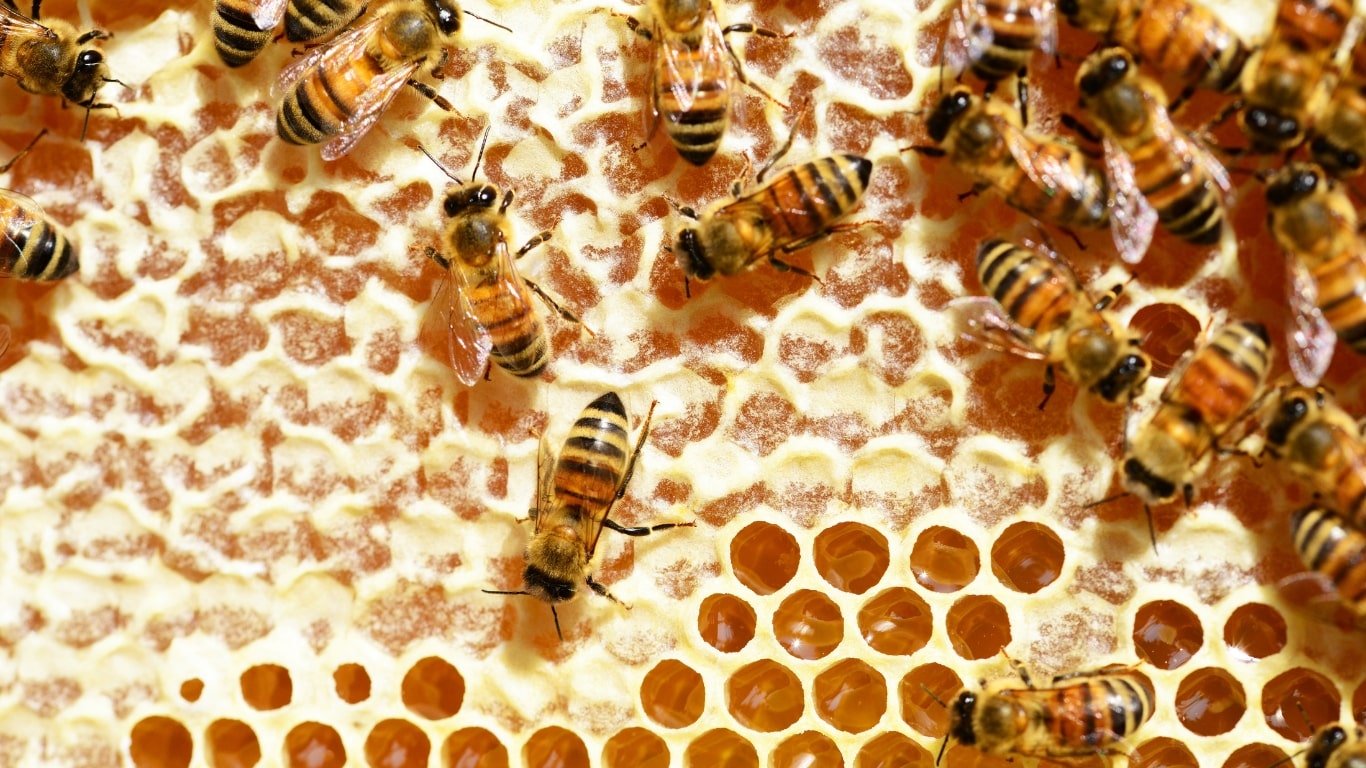
Introduction
Honey, the golden nectar derived from the diligent work of bees, comes in an astonishing variety of flavors, textures, and colors, each reflecting the unique flora of the region where it is produced. Among the many types of honey, Tupelo honey stands out as a rare and highly prized variety. Known for its distinct flavor, smooth texture, and unique chemical composition, Tupelo honey is often referred to as the “Queen of Honey.” This article delves into the fascinating world of Tupelo honey, exploring its origins, production, characteristics, health benefits, and the reasons behind its revered status.
The Origins of Tupelo Honey
Tupelo honey is produced in a specific region of the southeastern United States, particularly in the swamps and river basins of Georgia and Florida. The honey is named after the Tupelo tree (Nyssa spp.), which is the primary nectar source for the bees that produce this honey. The two main types of Tupelo trees that contribute to this honey are the White Tupelo (Nyssa ogeche) and the Black Tupelo (Nyssa sylvatica).
The White Tupelo tree, also known as Ogeechee Lime, is particularly significant for honey production. It grows in the swampy regions along the Apalachicola, Chipola, and Ochlockonee rivers in Florida and Georgia. These areas are characterized by their wet, humid conditions, which create an ideal environment for the Tupelo trees to thrive. The trees bloom in early spring, usually from late March to early May, producing small, delicate greenish-yellow flowers that are rich in nectar. The short blooming period makes the production of Tupelo honey a race against time for beekeepers, who must carefully monitor their hives to ensure that the honey is pure and uncontaminated by other nectar sources.
The Production of Tupelo Honey

The production of Tupelo honey is a labor-intensive process that requires the expertise and dedication of skilled beekeepers. The process begins with the careful placement of bee colonies in the Tupelo-rich areas just before the trees start to bloom. These colonies, often consisting of thousands of bees, work tirelessly to collect the nectar from the Tupelo flowers.
One of the key challenges in producing pure Tupelo honey is the management of the nectar flow. Beekeepers must ensure that the bees only collect nectar from the Tupelo flowers and not from other flowering plants in the area. This is achieved by strategically timing the placement and removal of the hives. Beekeepers often move the hives to the Tupelo groves just before the bloom begins and remove them immediately after the bloom ends. This meticulous timing is crucial to prevent contamination with other types of nectar, which could alter the flavor and characteristics of the honey.
Once the nectar is collected, the bees return to the hive and begin the process of transforming it into honey. They deposit the nectar into the honeycomb cells and fan it with their wings to evaporate the moisture, gradually thickening the nectar into honey. This honey is then sealed with a wax cap, where it remains until the beekeeper harvests it. The harvesting process involves carefully extracting the honeycomb frames from the hive, uncapping the wax seals, and spinning the frames in a centrifugal extractor to separate the honey from the comb.
After extraction, the honey is filtered to remove any impurities, such as bits of wax or bee parts, and then bottled. Pure Tupelo honey has a light amber color, with a slight greenish hue that is characteristic of the White Tupelo nectar. The honey is often left in its raw, unpasteurized form to preserve its natural enzymes and health benefits.
The Unique Characteristics of Tupelo Honey
Tupelo honey is renowned for its unique flavor, texture, and chemical composition, which distinguish it from other types of honey. The flavor of Tupelo honey is often described as smooth, buttery, and mildly sweet, with a light floral undertone and a lingering finish. Unlike some other honeys, it has a delicate, well-balanced taste that is not overly sweet or cloying, making it a favorite among honey connoisseurs.
One of the most remarkable features of Tupelo honey is its high fructose-to-glucose ratio. Most honeys contain a mixture of fructose and glucose, two simple sugars that influence the honey’s sweetness and crystallization properties. Tupelo honey has a higher fructose content compared to glucose, which gives it a smoother texture and a slower crystallization rate. While many types of honey tend to crystallize over time, forming a gritty or grainy texture, Tupelo honey remains liquid and smooth for a much longer period, sometimes for years. This characteristic makes it particularly desirable for use in cooking, baking, and as a sweetener for beverages.
The light amber color of Tupelo honey is another distinguishing feature. Depending on the specific variety of Tupelo tree and the conditions during the bloom, the color can range from pale yellow to a deeper golden hue, with some batches exhibiting a slight greenish tint. This color, combined with the honey’s clarity and viscosity, adds to its visual appeal.
Health Benefits of Tupelo Honey

In addition to its delightful flavor and texture, Tupelo honey is also prized for its potential health benefits. Like other raw honeys, Tupelo honey contains a variety of bioactive compounds, including antioxidants, enzymes, vitamins, and minerals, that contribute to its nutritional value and therapeutic properties.
One of the key health benefits of Tupelo honey is its high antioxidant content. Antioxidants are compounds that help neutralize free radicals in the body, reducing oxidative stress and lowering the risk of chronic diseases such as heart disease, cancer, and neurodegenerative disorders. Tupelo honey, particularly in its raw, unprocessed form, is rich in flavonoids and phenolic acids, which are powerful antioxidants.
Tupelo honey also has antimicrobial properties, making it effective in inhibiting the growth of harmful bacteria and fungi. This property is attributed to the presence of hydrogen peroxide, a natural byproduct of honey’s enzymatic activity, as well as other bioactive compounds. These antimicrobial effects make Tupelo honey a popular choice for soothing sore throats, promoting wound healing, and supporting oral health.
Another notable health benefit of Tupelo honey is its low glycemic index (GI). The glycemic index is a measure of how quickly a food raises blood sugar levels after consumption. Foods with a low GI are digested and absorbed more slowly, leading to a gradual rise in blood sugar and insulin levels. Tupelo honey’s high fructose content contributes to its lower GI compared to other types of honey, making it a more suitable sweetener for individuals with diabetes or those managing their blood sugar levels.
The Rarity and Value of Tupelo Honey

Tupelo honey is not only unique in its characteristics but also in its rarity and value. The production of pure Tupelo honey is limited to specific geographic regions and is highly dependent on environmental factors, such as weather conditions, water levels, and the health of the Tupelo trees. Any disruption to these factors, such as drought, flooding, or disease, can significantly impact the yield and quality of the honey.
The labor-intensive production process and the short blooming period of the Tupelo trees further contribute to the rarity of this honey. Beekeepers often face challenges such as unpredictable weather, competition from other nectar sources, and the risk of colony collapse, all of which can affect the availability of Tupelo honey in any given year.
As a result of its limited supply and high demand, Tupelo honey commands a premium price in the market. It is often sold in small quantities and is highly sought after by honey enthusiasts, gourmet chefs, and natural health practitioners. The honey’s unique flavor, coupled with its rarity, has earned it a reputation as a luxury food item, and it is frequently featured in specialty food shops, farmers’ markets, and online stores.
Frequently Asked Questions
What is so special about Tupelo honey?
Tupelo honey is renowned for its unique flavor, smooth texture, and slow crystallization. It has a distinct light amber color with a slightly greenish tint and a mild, buttery taste with floral undertones. What sets it apart is its high fructose-to-glucose ratio, which not only gives it a smoother texture but also ensures it stays liquid for a longer period. Its rarity, due to limited production in specific regions of Florida and Georgia, coupled with the meticulous process of ensuring purity, makes Tupelo honey highly prized among honey connoisseurs.
What is the difference between tupelo honey and regular honey?
The primary difference between Tupelo honey and regular honey lies in their flavor, texture, and crystallization properties. Tupelo honey has a lighter, smoother taste, often described as buttery with floral notes, whereas regular honey can vary widely in flavor depending on the nectar source, often being more robust or earthy. Additionally, Tupelo honey has a higher fructose content, which makes it slower to crystallize compared to regular honey, which tends to crystallize more quickly due to a higher glucose content. This unique characteristic allows Tupelo honey to maintain its liquid form for a longer time.
Which is better, manuka or tupelo honey?
The choice between Manuka and Tupelo honey depends on the intended use and personal preference. Manuka honey, primarily produced in New Zealand, is famed for its potent antibacterial properties due to its high methylglyoxal (MGO) content, making it highly sought after for medicinal purposes, particularly for wound care and immune support. Tupelo honey, on the other hand, is celebrated for its exquisite taste, smooth texture, and low crystallization rate, making it a premium choice for culinary use and as a natural sweetener. While both are exceptional in their own right, Manuka honey is generally favored for its health benefits, whereas Tupelo honey is prized for its flavor and texture.
Is tupelo honey ok for diabetics?
Tupelo honey is often considered a better option for diabetics compared to other types of honey due to its low glycemic index (GI). Its higher fructose-to-glucose ratio means it has less of an impact on blood sugar levels, as fructose is metabolized more slowly than glucose. However, like all forms of sugar, Tupelo honey should still be consumed in moderation by individuals with diabetes, as it can still affect blood sugar levels. It’s always advisable for diabetics to consult with a healthcare professional before incorporating any type of honey into their diet.
What is the story behind the song “Tupelo Honey”?
“Tupelo Honey” is a song by the Northern Irish singer-songwriter Van Morrison, released in 1971. The song is a romantic ballad that uses Tupelo honey as a metaphor for the pure and sweet love the narrator feels for his partner. The lyrics emphasize the natural and unspoiled quality of Tupelo honey, drawing a parallel to the idealized, untainted nature of love. The song has become one of Morrison’s most beloved tracks, celebrated for its soulful melody and heartfelt lyrics, and has contributed to the mystique surrounding Tupelo honey.
What is Tupelo Honey named after?
Tupelo honey is named after the Tupelo tree, specifically the White Tupelo (Nyssa ogeche) tree, whose blossoms provide the nectar that bees use to produce this unique honey. These trees grow in the swampy regions of the southeastern United States, particularly along the river basins of Florida and Georgia. The honey takes on the name of the tree because the nectar from its flowers gives Tupelo honey its distinctive flavor, color, and slow crystallization properties.
Does Tupelo Honey go bad?
Tupelo honey, like other types of honey, does not spoil or go bad under normal conditions. Its low moisture content and natural acidity create an environment that inhibits the growth of bacteria and other microorganisms. When stored properly in a cool, dry place and sealed in an airtight container, Tupelo honey can last indefinitely. Over time, honey may darken and develop stronger flavors, but this is a natural aging process and does not indicate spoilage. Unlike other honeys, Tupelo honey’s high fructose content also helps it resist crystallization, preserving its smooth, liquid form for longer.
Is Tupelo Honey rare?
Yes, Tupelo honey is considered rare due to its limited production and the specific environmental conditions required for its harvest. It is primarily produced in a small geographic area along the Apalachicola, Chipola, and Ochlockonee rivers in Florida and Georgia. The White Tupelo trees, which are the primary nectar source for this honey, have a very short blooming period, typically just a few weeks each spring. Additionally, producing pure Tupelo honey requires precise timing and careful management by beekeepers to ensure that the honey remains uncontaminated by other nectar sources. These factors contribute to its rarity and high value.
Why doesn’t Tupelo Honey crystallize?
Tupelo honey’s resistance to crystallization is due to its high fructose-to-glucose ratio. Most honeys contain a mix of fructose and glucose, and the glucose tends to crystallize over time. However, because Tupelo honey has a higher proportion of fructose, which remains dissolved in water more readily than glucose, it stays in liquid form for a much longer period. This high fructose content also gives Tupelo honey its smooth, velvety texture, making it an ideal choice for those who prefer honey that remains pourable and easy to use.
Conclusion
Tupelo honey is a true gem in the world of honey, offering a combination of exquisite flavor, unique characteristics, and potential health benefits. Its origins in the pristine swamps of the southeastern United States, the meticulous production process, and the challenges faced by beekeepers all contribute to its status as one of the most prized and sought-after honeys in the world. Whether enjoyed on its own, used as a natural sweetener, or incorporated into culinary creations, Tupelo honey continues to captivate the senses and inspire a deep appreciation for the wonders of nature and the art of beekeeping.



